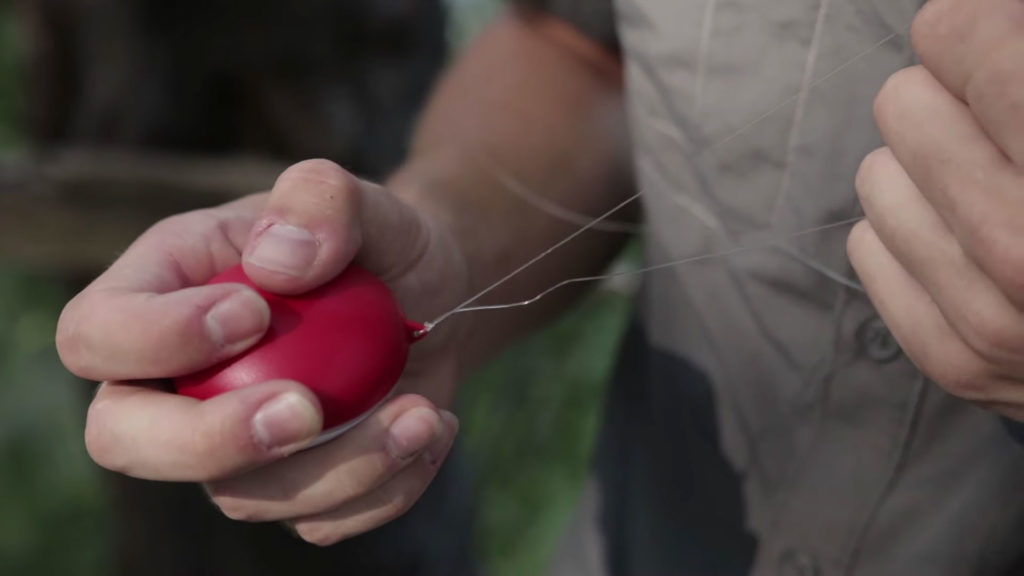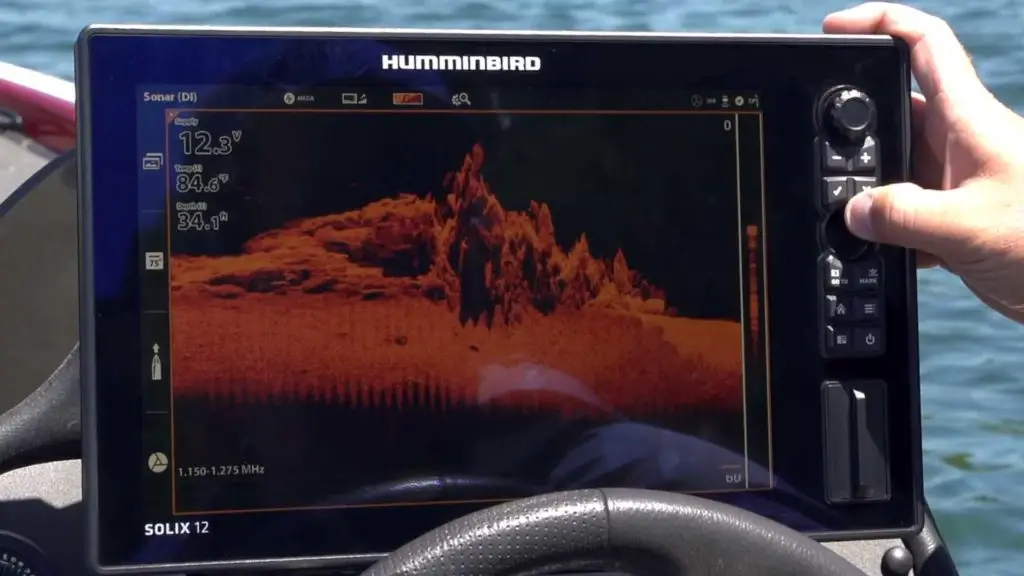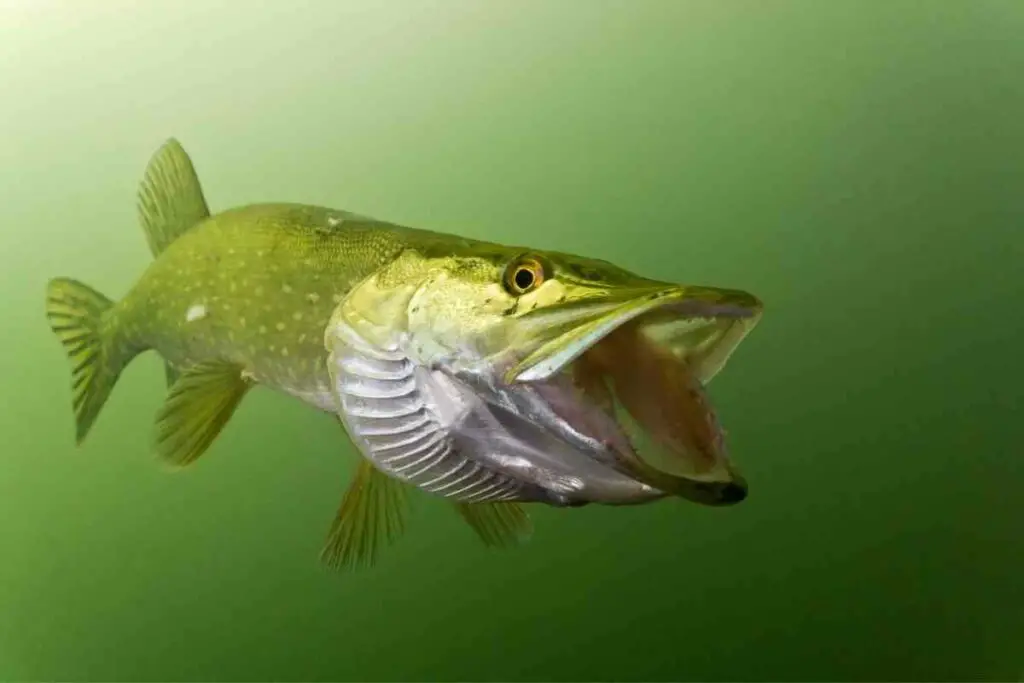
If fishing is your passion, your life or just simply, your everything you may have come across the unique Muskellunge (also known as a Muskie) or you may have stumbled across a Pike.
Both fish look so similar that you may have wondered if they are actually the same?
Well, no… so as much as they look identical to each other, both types of fish have a lot of differences.
This article serves up the need-to-know differences between these two giants of the riverbed.
Table of Contents
These Two Bad Boys Put the “Game” Into Gamefish!
Muskie and Pike are the main favourites for gamefish.
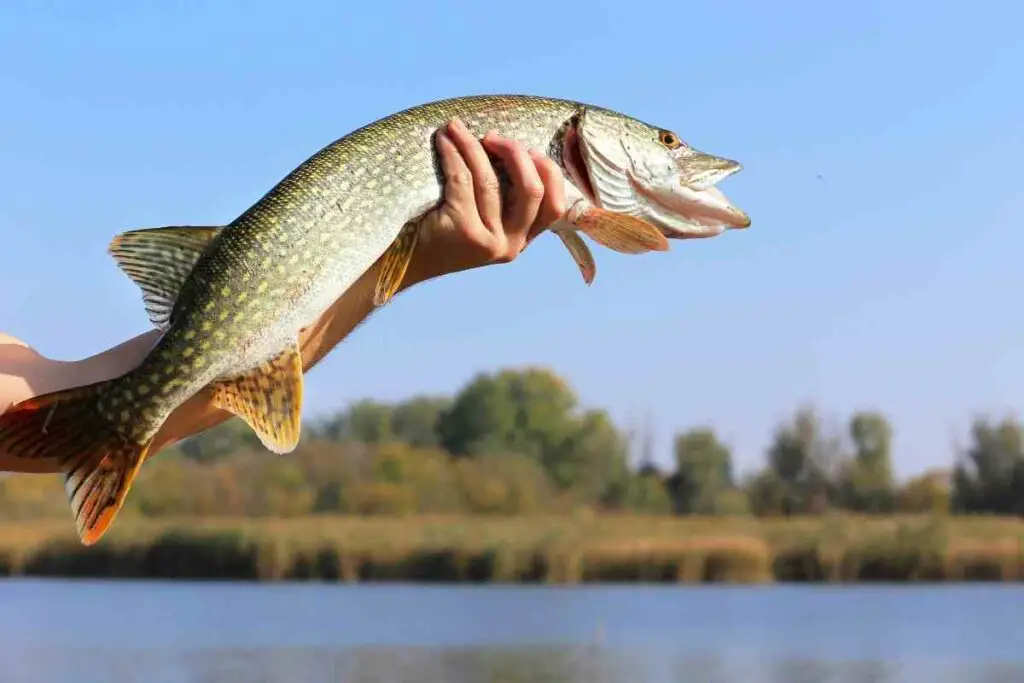
These enormous fish with their torpedo-shaped build are just as fast and strong as they look.
Both Muskie and Pike fish are known as ‘water wolves’ and also known as ‘ the fish of a thousand casts.
These two fish definitely are not shy and retiring, making them the best type of fish for experienced anglers to target.
So, are Muskie and Pike The Same?
Pike and Muskie are close relatives.
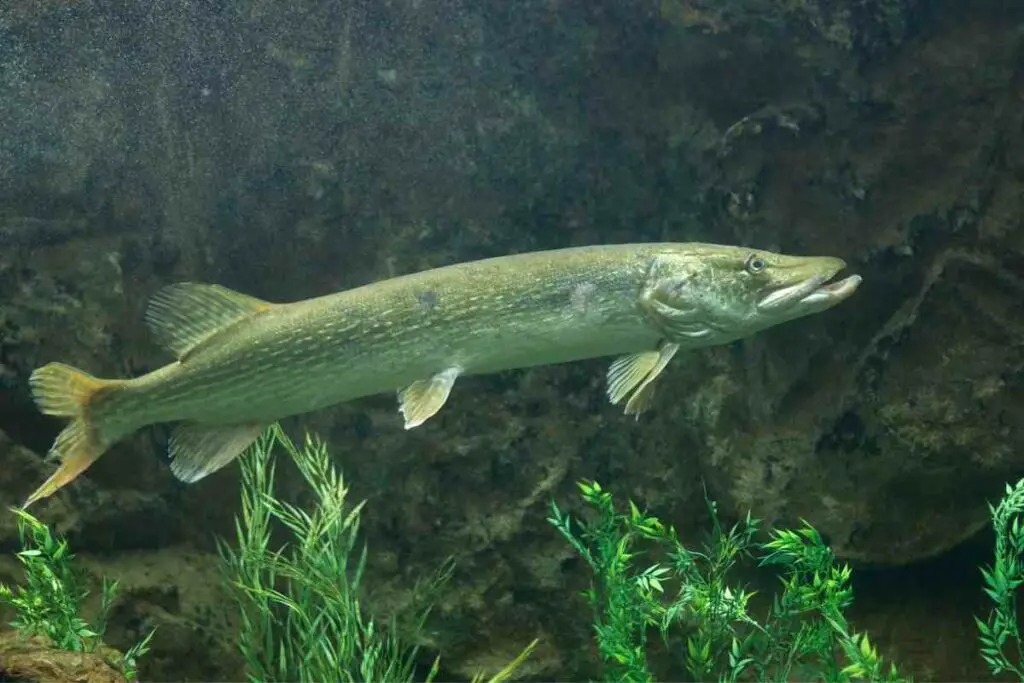
Both breeds of fish are from the genus “Esox”. However, they’re not the same.
They’re two different completely different fish with distinct personalities and behaviours, markings, and distributions.
Keep reading to learn the key differences.
Which Is It? Musky or Muskie?
Muskellunge have one of the most diverse range of spellings compared to any other species.
How they are spelt all depends on whereabouts you catch them so for instance, they may be called:
- Muskellunge
- Muskelunge
- Muscallonge
- Maskinonge
- or Milliganong
So whether you can spell them as “Muskie” or “Musky” well, both are acceptable so you have no problems there.
Which Fish Is Bigger? Muskie or Pike?
If you have seen both types of fish, you would know Muskie and Pike are often around the same size in appearance.
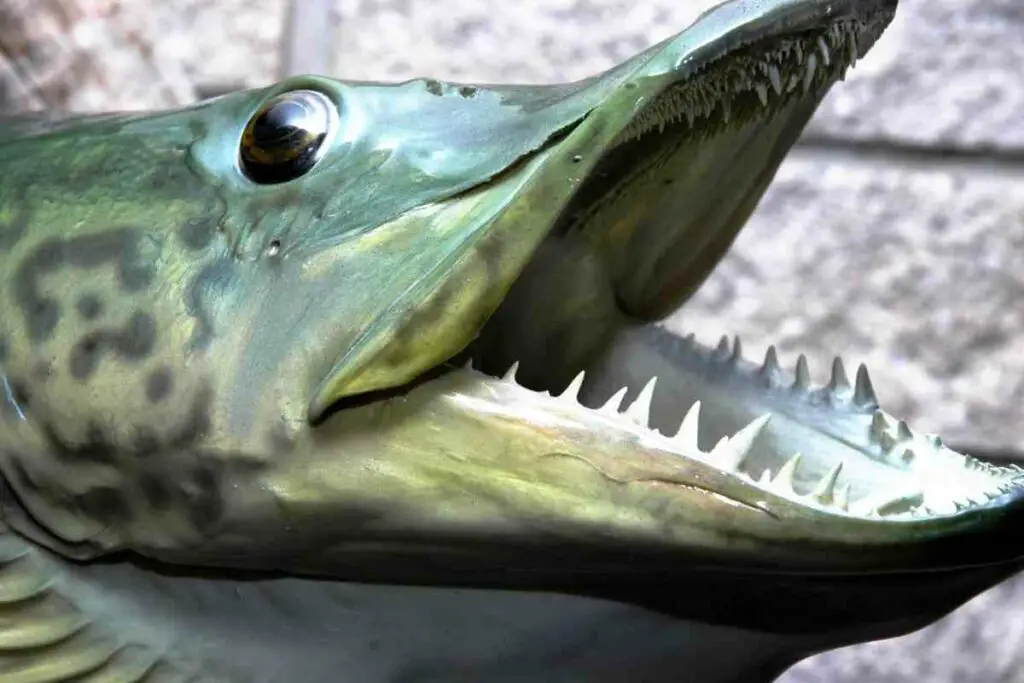
This is one of the many reasons people have trouble telling them apart. Muskie grows bigger than Pike.
On average, a Pike is less than two feet long, whereas the average Muskie regularly hit twice that size.
According to The IGFA record for Pike stands at just over 55 pounds, 12 pounds short of the record for Muskie.
What Is The Difference Between The Tiger Muskie vs. Muskie?
You will be even more impressed when you come across a Tiger Muskie.
You may have asked yourself if a Tiger Muskie is a subspecies of a regular Muskie?
Or if the Tiger Muskie is of a regional variety?
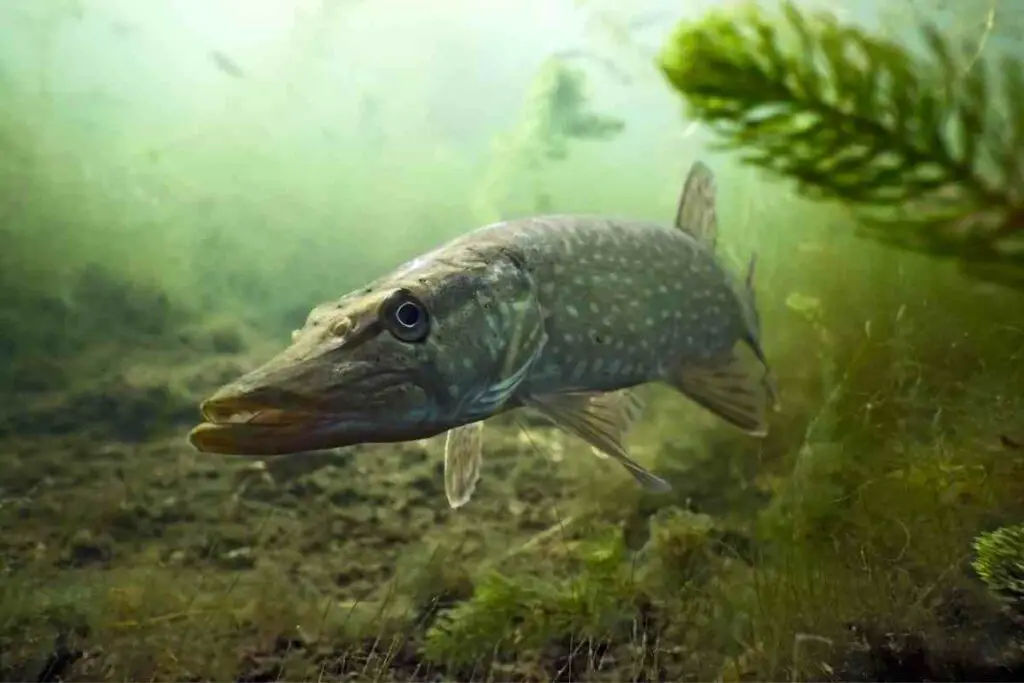
Well, the answer for both of your questions is no. Tiger Muskie are a hybrid of a female Muskellunge and a male Northern Pike. They’re very rare to find however, they are stocked in some waters.
Their extravagant and unique look, enormous size, and that they are rare to find put them high on many anglers’ bucket lists.
Muskie vs. Pike – A point-to-point Comparision
Muskie and Pike are both pointy, long, freshwater fish.
So the question is, just how would one be able to tell exactly which fish they have caught?
Well as you know, the colour and size are not always reliable, as with Muskie, they vary a lot in both.
There are easy ways to tell the two types of fish apart.
1.Tail
The easiest way to differentiate a Muskie and Pike is by looking at their tails.
Both fish have forked tails, but Muskies have a much more pointed, forked type tail, whereas the tail on Pike is more round.

Also, note that Tiger Muskies also have rounded tails which will help you tell them apart from regular Musky.
2. Marking
If you have caught Muskie before, you will notice that they can vary a lot in colour and pattern.
They may have strong, thick bars, faint spots, or no pattern at all.
However, if you look closely, you can see that their markings will always be darker than the rest of their body.
With Pike you notice that their bodies are dark greeny-blue alongside bean-shaped sports which appear in a creamy-light complexion.
3. Pores
If you look at their tails and markings and you are still unsure, well you could also try looking at their pores.
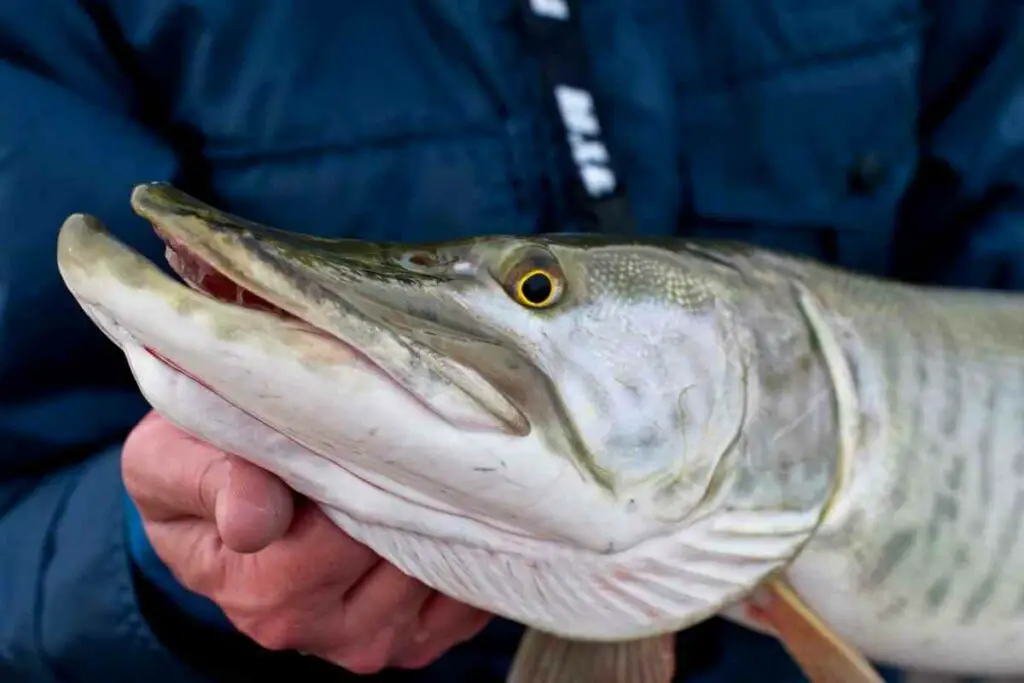
Turn the fish you have caught over and look at the underside of the jaw. Both Pike and Muskie have special pores to detect movement in the water.
You’ll find that with Pike, they have four to five pores on each side whereas Muskie has between six and nine pores.
Just to Note: Handle the fish gently and keep your hands well away from its mouth as you flip it over if you want to keep your fingers!
4. Scales
Once you have caught one of these beauties, have a look at the scales on their face.
Pike have scales all over their cheeks, whereas Muskies only have them on the upper half. (You should be able to identify your fish without feeling its face, though).
5. Size
As mentioned previously, you can tell the difference between a Muskie and a Pike based on their size.
The average Pike is between 16-22 inches. The longest Pike that has ever been caught and recorded is 60 inches long.
Whereas a Muskie, in general, is between 24-46 inches.
6. Location
Pike and Muskie both thrive in and around the Great Lakes.
You can find both fish in famous lakes and the surrounding rivers. However, that’s about as far as the similarities go.

You can catch Pike in most of North America.
You may catch Pike in locations such as Oklahoma and Arkansas, and in isolated lakes even farther south than that.
As far as going beyond North America, you can find them within the same northerly range around the world.
Muskies, however, have a much more limited distribution. They live in and around the Great Lakes, and down along the Appalachian Mountains.
They were also introduced into Lake Manitoba and Lake Winnipeg, but catches in these lakes are very rare.
If you want the best chance of catching a Muskie, try sticking to the Great Lakes and the rivers around them.
7. Habitat
Muskies normally live in large rivers and medium-size or large lakes.
Pike are more laidback with regards to where they live.
You may catch one in smaller rivers and ponds, as well as all the places Muskie tend to inhabit hence why you may be unsure initially of what you have caught.
The best place to look for either fish is in thick weedy sections of rivers or lakes.
8. Lifespan
Muskie tend to have a longer lifespan than Pike living up to 30 years whereas a Pike has a shorter lifespan of been 10-15 years.
Tips On How To Catch Pike and Muskie
Both fish are highly predatory and are built for speed and strength.
Their physicality makes them prized game fish throughout their range.
Muskies are also hard to hook onto, hence the nickname “fish of a thousand casts.” They are very intelligent fish making them difficult to track and impossible to predict.
However, there are a few strategies you can use to catch both fish.
Fishing Tips For Catching Pike
Most anglers use large spoons, shallow-running plugs, or spinnerbaits to catch Pike. You could also try using live Bait.
Pike go for much larger prey in autumn when they’re stocking up for the winter. In spring however, they are happy with smaller baits.
Pike are a famous fly-fishing target. They will take a variety of large streamers and sliders.
As another side note, make sure you’re using weedless flies if you don’t want to take half the lake away with you.
Also note that when you are fishing, Pike have a vicious bite, so make sure to use a heavy leader.
Muskie Fishing Tips
When fishing for Muskie, the best advice would be to have lots of patience.

Even those experienced anglers will not claim to have reliably caught big Musky. Aim for a “follow” and they might reward you with a Muskie hookup.
When either fishing for Musky or Pike, you can follow the fishing tips for both for instance, fish the weeds and ensure to use larger baits later in the year.
If you want to keep your lure ensure to use a wire leader.
Some of the best lures for catching Musky are large jigs, jerkbaits, diving plugs, and bucktail spinners.
Rounding Up
Pike and Muskie are both beautiful fish to catch.
They fight hard, grow huge, and look amazing. Musky are much more limited however, both fish like the same kind of habitat and hunt very similarly.
Musky are more reputable to catch because they’re so unpredictable, but Pike are almost in the same league too.
Both these fish are strong and use every bit of their strength and agility in the fight.
It is mainly harder to get Musky to bite, but you should always be happy to see either fish on the end of your line.
You Might Also Read
- Best Fishing Life Jackets ( My 3 Favorites )
- Garmin Vs Lowrance? Latest 2021 side-by-side review
- Humminbird Vs Raymarine: – The Real Winner of the Race
- Ibobber Vs Deeper: Who aces the race?
- Humminbird vs Garmin – Two leaders go head to head
- Down imaging vs Side Imaging on Fish Finder (Plus Tips and Tricks)



